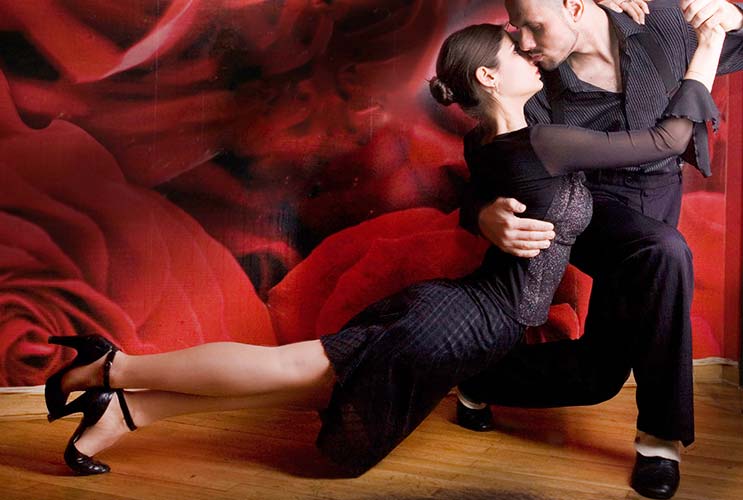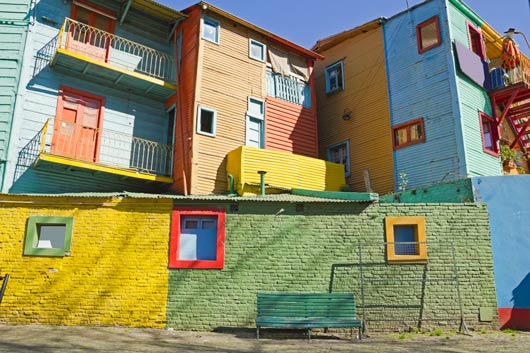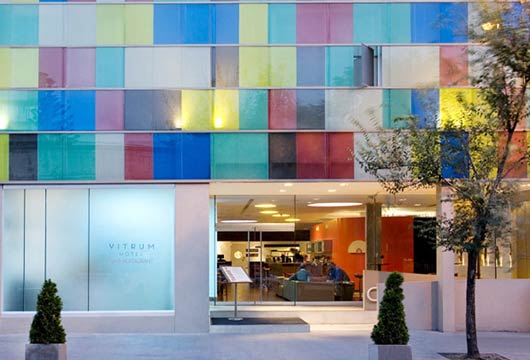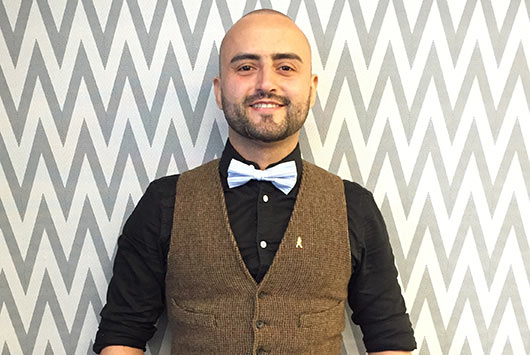
“What’s new, Buenos Aires?” It’s what Che Guevara playfully asked Eva Perón in the musical, Evita. And it’s a sentiment anyone who returns to the Paris of the Pampas for another tango in their t-strapped shoes will wonder. Buenos Aires is a city in constant reinvention, perhaps mirroring its residents’ passion for psychoanalysis and the art of gab, which can run as deep as any Jorge Luis Borges passage.
Like all great metropolises, Buenos Aires is pedestrian-friendly and easy to get around (taxis, metro, buses) with loads of parks, museums, a renowned zoo for the kids, and historically distinct neighborhoods to explore. The recently gentrified Palermo Soho (formally Palermo Viejo), for example, was once a working-class neighborhood with one-story homes known as ‘sausage houses’ (built by Italian immigrants) which stood alongside mom-and-pop tienditas and auto-repair shops. While its tree-lined streets still maintain yesteryear’s slow-pace, today, Palermo Soho, along with nearby Palermo Hollywood, are neighborhoods peppered with elegant restaurants and trendy boutiques packed with the city’s most stunning human specimens.
Read Related: Guide to Buenos Aires With Kids

Across town, San Telmo, one of the oldest districts of the city with well-preserved 19th century architecture, comes alive on the weekends with art shows and antique fairs. After you’ve shopped, stroll the Caminito, a colorful street museum with brightly painted houses in La Boca, a port neighborhood with plenty of history. The city was founded by the Spanish conquistador Pedro de Mendoza in 1536. The city on the banks of the Río de la Plata, has always fancied itself more European than South American: Nearly a million Italian immigrants and boatloads of Spaniards immigrated to escape wars and seek fortune during the late 19th Century and up until the 1940’s. Even Carlos Gardel, the godfather of tango, was a French immigrant. Though the older locals still nod to Europe whenever they can, today’s porteños (nickname for B.A. natives) brim with South American pride. You see, it’s canchero (cool) to order a local Malbec wine or Quilmes beer with your meal instead of some European import these days.

RETRACING EVITA’S FOOTSTEPS
Take in the grandeur of the legendary Plaza de Mayo, the square that has been center stage to many of Argentina’s historical events. There, you can eye the balcony where Eva Perón, dripping in diamonds, waved at her people below. Glimpse the exterior of the Casa Rosada, the bright-pink mansion that’s reigned by yet another powerful woman these days, Argentina’s President Cristina Fernandez de Kirchner. Then hop a taxi to Cementerio de la Recoleta, a cemetery with Neo-Gothic flairs where Evita’s body rests, and where her tomb was rumored to have been raided by necrophiliacs (See the novel Santa Evita by Tomás Eloy Martínez). Continue in Evita’s footsteps by having a drink at the Alvear Palace Hotel where she liked to sip her afternoon tea.
In the late evening, after you’ve satiated yourself with a delectable slab of Argentine steak (see restaurant picks below), work it off with a tangled tango at Confitería Ideal. Let yourself be steered across the floor by a gray-haired gentleman under the equally graying Victorian chandeliers of this classy dance hall. If you prefer to watch, Bar Sur offers dinner and a tango show where newcomers can watch tragic-faced duos pressed cheek to cheek, breast to chest, and so-on, to the sounds of Ástor Piazzolla on his bandoneón.

WHERE TO EAT
La Brigada—Estados Unidos 465. San Telmo—For the best steaks in Argentina, this tiny restaurant is frequented by international celebrities, so make sure to reserve.
Olsen—Gorrit, 5870. Palermo Hollywood—The décor is pure Scandinavia. The Argentine bondiola (pork tenderloin) is outrageous. Call ahead to get an outdoor table on the heated deck, or on the couches around the fireplace.
Farinelli—Fairly new, but full of buzz, this minimal space
offers the staples: salads, sandwiches, and entrees.
Cafe Tortoni—Since 1858, this historic Parisian-style coffeehouse has even hosted Albert Einstein. Play billiards, dominoes and dice in the back.

WHERE TO SLEEP
Home Hotel—An eco-friendly hotel in Palermo Hollywood that will feel more like a casa.
Costa Petit Hotel—Relive Buenos Aires’ golden years in this boutique hotel with a garden and pool.
Vitrum Hotel—In the heart of Palermo Soho, a high-tech hotel with art, design, and fine cuisine.
NH Hotel Latino—Large and centrally located near the Teatro Colón and Calle Florida.











